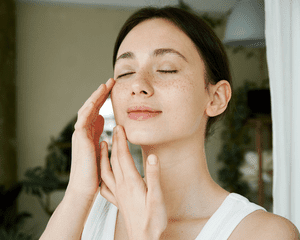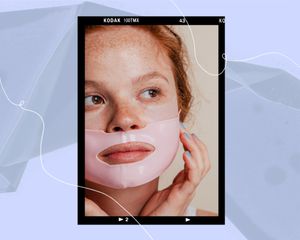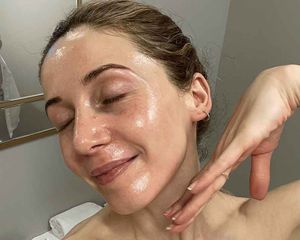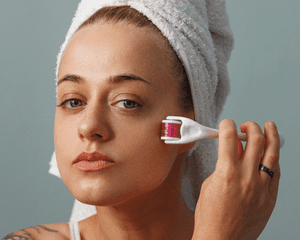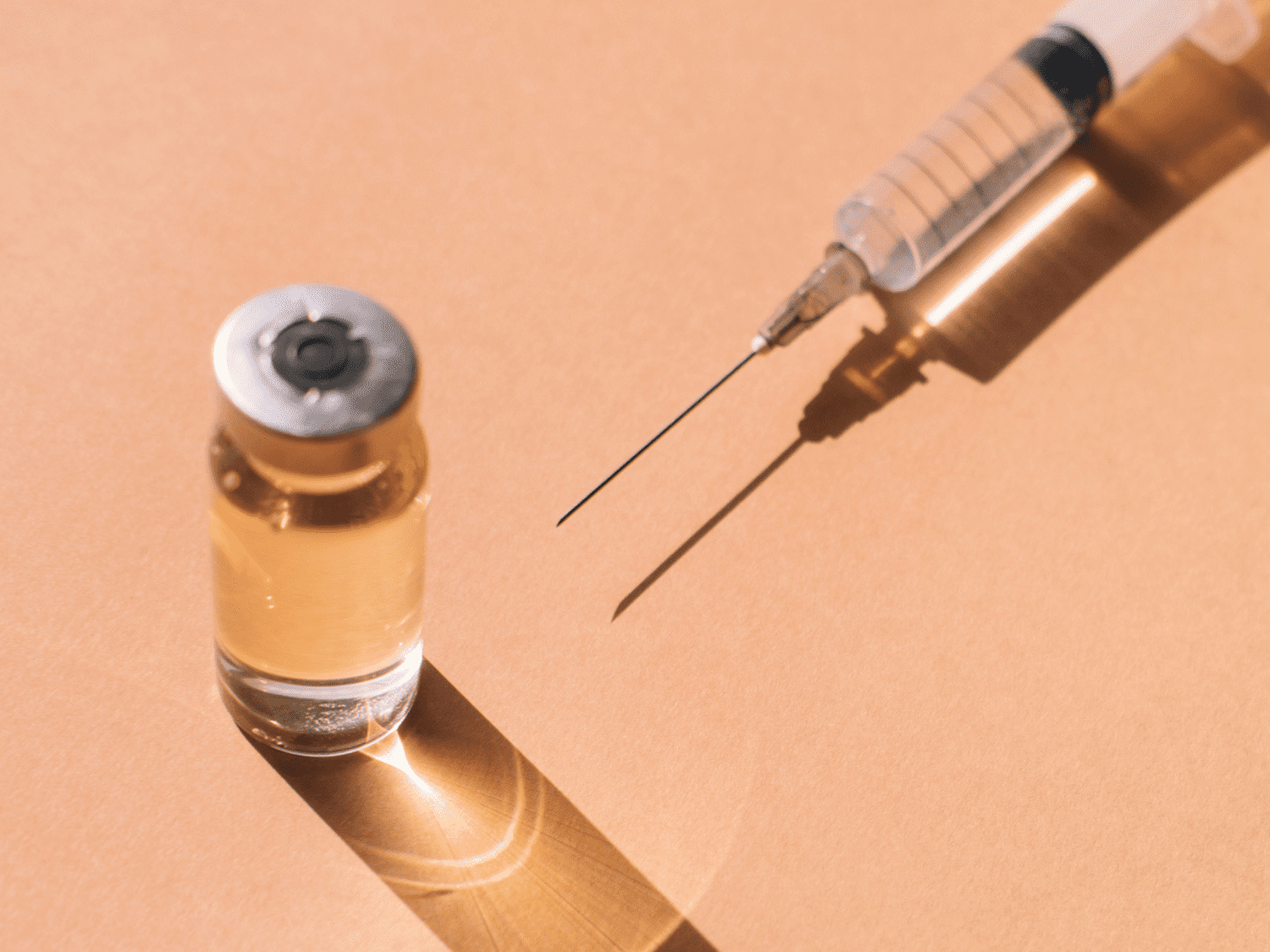
Getty
While Botox is generally the in-office move for reducing wrinkles on the forehead and crow’s feet around the eyes, it can also be used in your under-eye area. Though you may be familiar with the concept of injecting filler to reduce dark circles, the targeted use of Botox can help diminish the appearance of texture and wrinkles when strategically placed in the under-eye area. “Botox is typically injected where the under-eye muscle bulges out the most upon smiling, which is in the mid-pupillary line,” explains board-certified dermatologist Jessie Cheung, MD.
Curious like us? We spoke to Cheung, board-certified dermatologist Rachel Nazarian, MD, top facial plastic surgeon Nigar N. Ahmedli, MD, and registered nurse Kristina Kitsos to find out more about under-eye Botox, including how it compares to under-eye filler and how to tell if the treatment is right for you.
Keep reading to learn more about under-eye botox, including the benefits and potential risks.
Meet the Expert
- Jessie Cheung, MD, is a board-certified dermatologist who practices in both New York City and Chicago. She has more than 15 years of experience and is the founder of Cheung Aesthetics and Wellness.
- Nigar N. Ahmedli, MD, is a board-certified plastic surgeon and director at Greenwich Street 497, specializing in facial plastic and reconstructive surgery.
Kristina Kitsos, RN, is a registered nurse, cosmetic injector, and skincare expert with more than 15 years of experience. She has two practices in the Los Angeles area and specializes in minimally invasive aesthetic medicine. - Rachel Nazarian, MD, is a New York City-based board-certified dermatologist and assistant clinical professor at Mount Sinai Hospital Department of Dermatology.
What Is Under-Eye Botox?
Under-eye Botox is a neurotoxin injection method in which a small amount of Botox (typically one to two units) is injected into the muscle under the middle of the lashline of the lower eyelid. You may have also heard this treatment referred to as “jelly roll Botox,” as the injection site is where the aforementioned “jelly roll-like” muscle protrudes from your under-eye area. According to Ahmedli, injecting Botox into this spot "Weakens the muscle that crinkles and closes the eye ... allowing the eye to look more open and, therefore, well-rested and awake."
While the concept may sound somewhat unconventional, it’s a practice that Cheung typically enlists when treating crow’s feet wrinkles. “The eye muscle is a sphincter, meaning it is a circle that surrounds the eye, so if you’re only Botoxing the lateral portion of your eye muscle, you’re allowing the under-eye portion to get relatively stronger and larger, thus producing more wrinkles over time,” she says. “The duration of your crow’s feet Botox should also improve since more of the eye muscle is relaxed.”
Who Is a Candidate for Under-Eye Botox?
According to Kitsos, those who have healthy eyelid muscles and good eyelid support are ideal candidates for this treatment. “It’s typically injected using a fine-gauge insulin needle in the lower region of the muscle that circles your eye,” she says. “A very low dose is administered, and it lasts roughly three to four months, as most neuromodulators do.”
Benefits
If you’re bothered by horizontal wrinkles that appear under your eyes when you smile or squint or the “jelly roll” muscle that sticks out when you do similar motions, under-eye Botox can help reduce their appearance. “Under-eye Botox can help to shrink the appearance of that muscle that appears upon smiling,” Cheung says. “Another benefit of treating the under-eye portion is a more open, smoother appearance, as skin texture can be improved with the very superficial delivery of low-dose Botox in an area.”
How to Prepare for Treatment
Preparing for an under-eye Botox treatment is pretty similar to preparing for other injectables—avoid alcohol 24 hours beforehand, and stop any blood-thinning medication like aspirin, Advil, Aleve, Motrin, ibuprofen, fish oil, turmeric, green tea, and garlic supplements a week ahead of your appointment. “All of these things thin your blood and increase the risk of bruising,” Kitsos says.
What to Expect During Treatment
“Your doctor will assess your eye muscle and may even perform a lower lid 'snap test' to ensure that you’re a good candidate for under-eye Botox,” says Cheung. “If you have very saggy or puffy eyelids, under-eye Botox may not be the right treatment for you.”
If your doctor determines that you are a candidate, they’ll move forward by either numbing or icing the area, though Kitsos notes that it’s often not necessary. “The treatment usually entails one to two small injections that are relatively painless,” she says. “Patients consistently report very minimal to no pain during injection.” The Botox should kick in two weeks after your initial injection, at which point you can schedule any follow-up appointments with your doctor if needed.
Under-Eye Botox vs. Under-Eye Filler
“Fillers contour the area and replace volume, while Botox shrinks muscles and reduces wrinkling,” Cheung says. Under-eye filler is typically used to fill hollow spots in the under-eye area and lessen the appearance of dark circles caused by volume loss. While the appearance of wrinkles may be lessened because of the filler’s ability to plump up fine lines, the muscle causing said line is still active and able to move. By contrast, under-eye Botox will prevent the muscle from moving and creating a wrinkle but won’t have an impact on dark circles.
"Often, they can be used together to optimize the look of the eye area," Ahmedli adds, "Under-eye botox is used to open the eyes a little bit to look more awake and fresher. Under-eye filler is used to plump the deep grooves or [tear] troughs that form under the eyes. Filler can make you look less tired as a result."
Potential Side Effects
As with any injectable treatment, bruising or swelling can be a side effect, and Kitsos notes that if too much Botox is used, the under-eye area runs the risk of looking swollen, or eye bags can look emphasized for the duration of the treatment’s lifespan, which is about 3 to 4 months. “We have lymph glands under the eyes, and when Botox is injected in that area, this temporarily paralyzes the muscles that work to push the lymph away from the under-eye area, which can result in swelling,” she says. “Additionally, if the fat pad under the eye loses too much support by a relaxed under-eye muscle, the fat pad can herniate and make under-eye bags look even worse, or the lower eyelid can become too weak and pull away slightly from the muscle.” The latter risk can also lead to issues like blurry vision or dry eyes.
And as counterintuitive as it may seem, in some circumstances, under-eye Botox can actually cause wrinkles in other areas of your face. "One of the most likely side-effects is that you may form new wrinkles in an area slightly below or next to the original ones," says Nazarian. "Because some of the lines that are under your eyes are from smiling and the pressure of your cheeks pushing up on the eye area, your skin may find a new place to fold after you have Botox injections under your eyes. This part is somewhat unpredictable, but despite the risk, many people still favor the post-Botox appearance and are pleased with the results."
Though our experts stress that it is extremely rare, it is possible to inject under-eye botox improperly. "In theory, if you inject too much Botox, the eyelid can sag. In the most serious cases, the eyelid may become so weakened that you cannot completely close your eyes," Ahmedli says.
While Kitsos states that these risks are more prevalent in older patients with thinner eye muscles, err on the side of caution and get a detailed consultation from your provider to see if you’re a good candidate or if another option is a better route.
The Cost
The final cost of Botox can vary depending on your provider’s price per unit and exactly how many units are used, but Kitsos notes that you can expect to pay between $50 and $150 for under-eye Botox. “A typical dose for under-eye Botox is two units, which is usually done in addition to crow’s feet Botox, which can be between six and 10 units,” Cheung adds.
Aftercare
Aftercare for under-eye Botox is pretty minimal. "Sometimes you can get a little bruise at the injection site because the skin is thin and there are tiny vessels in the area, but the bruise will resolve in a few days," Ahmedli says. To help minimize bruising, Nazarian recommends you avoid massaging the area and ice immediately following injections. Kitsos notes that you can resume applying makeup to the area the day after your injections.
The Final Takeaway
If your end goal is to minimize the horizontal lines under your eyes and/or reduce the appearance of the muscle that sticks out when you smile, you could be a good candidate for under-eye Botox—but make sure to get a thorough consultation from your doctor before getting the treatment. Cheung notes that under-eye Botox might not be the right treatment for those who experience sagging in the eyelid area or those with naturally puffy eyes, to begin with, but if you are a candidate for the treatment, the end result can range from subtle to very significant.
“Botox is only beneficial for dynamic wrinkles. Under-eye bags, under-eye hollows, and dark circles under the eyes are better treated with dermal fillers and or surgery," Kitsos says. Work with your doctor to determine the issue you’d like to treat. If you’re not the ideal candidate for under-eye Botox, Kitsos suggests looking into laser resurfacing treatments, as well as the aforementioned filler or surgery routes.
